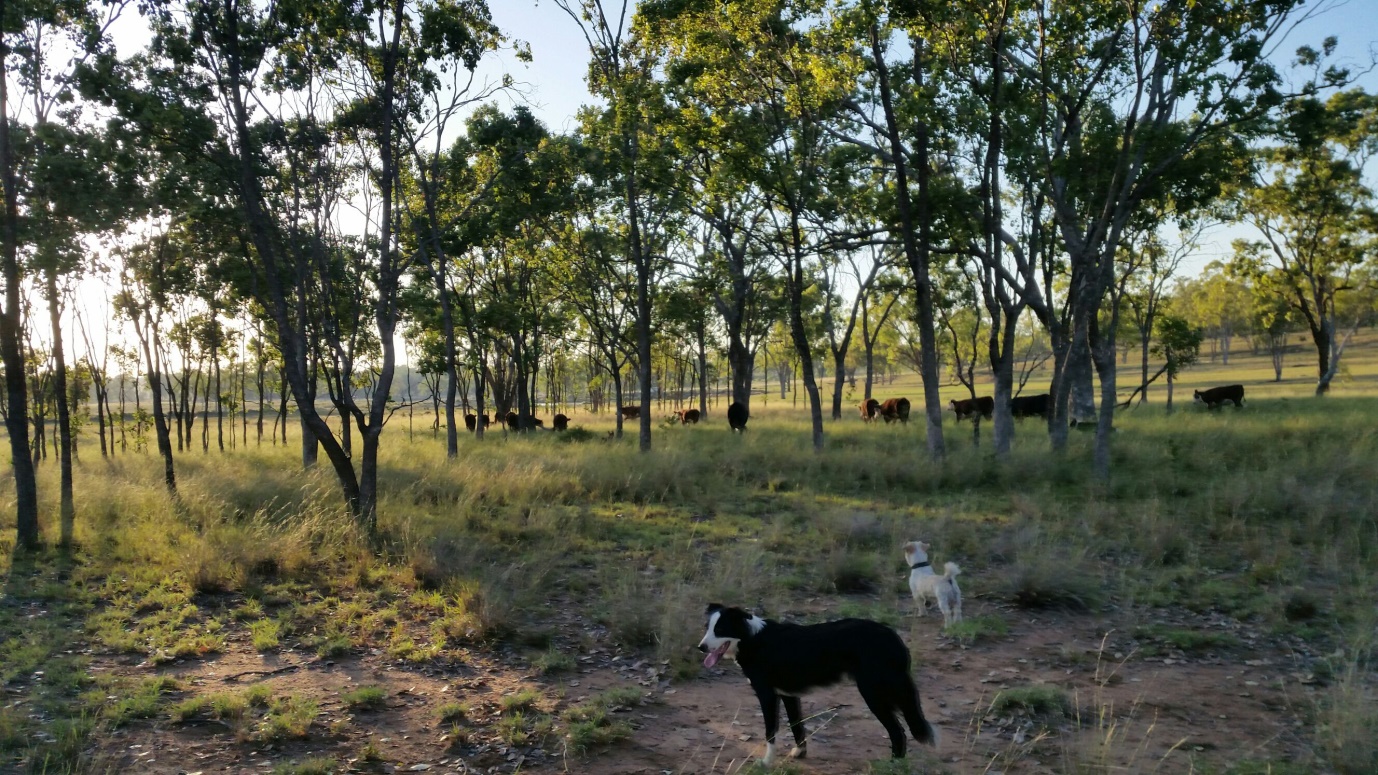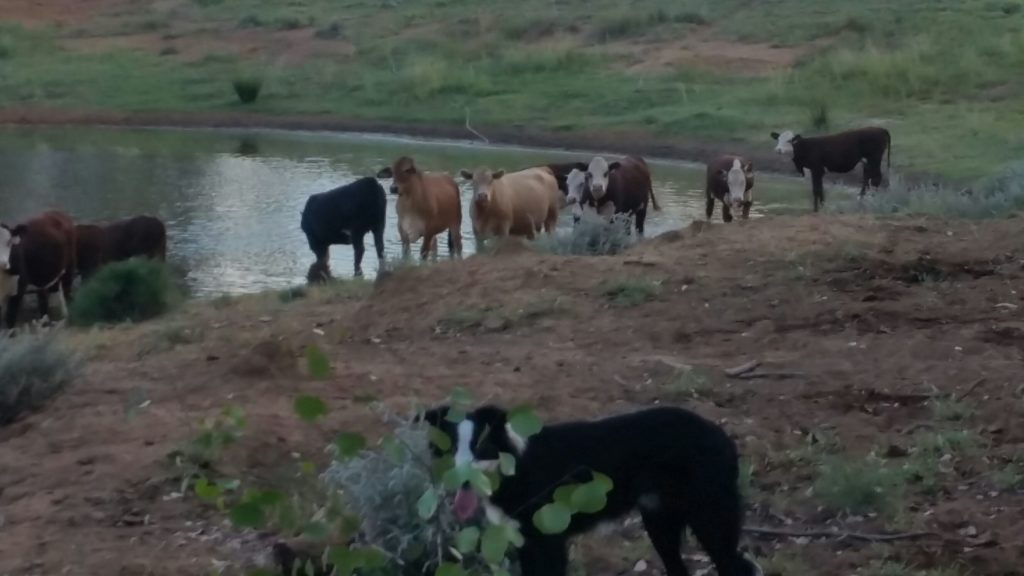
Recently, I spent a couple of days mustering cattle to treat them for Buffalo Fly.
The buffalo fly, Haematobia irritans exigua, is a small biting fly 3.5 – 4 mm long. They feed off cattle and buffalo (hence their name), and cause irritation which can result in reduced production, if cattle are heavily infested. They are annoying as mozzies and no matter how hard you seem to scratch or flick them away, they just keep coming back. This is why we give our cattle a helping hand to get rid of them.
Buffalo flies were accidentally introduced into northern Australia from Asia in the mid-nineteenth century. Since then they have spread through northern Western Australia, the Northern Territory, Queensland and north-eastern NSW.
Their distribution varies from season to season. Warm, moist conditions favour multiplication and spread.

Our Mustering Mates
Buffalo flies live permanently on their host, the females only leaving to lay eggs in freshly deposited dung pats. Adult flies live for two to three weeks, and females lay eggs from 4 days after they commence sucking blood, and continue to lay eggs until they die. No wonder they breed up so quickly!
It only takes between 15 to 24 hours for the eggs to hatch if conditions are good. Once hatched the larvae burrow into the dung until about four to five days later, when they begin to pupate before emerging as adult. The whole process from egg to adult takes roughly nine to eleven days. A newly emerged fly can travel up to 10 kms in search of a host. They also spread between herds if they are dislodged from an animal (for example, as a result of scratching or tail flicking). Cold weather and frosts kill the larvae or pupae which is why we don’t get as many flies during the winter (unless we experience an unusually warm winter).
After treatment it doesn’t take long for the cattle to stop scratching, flicking their tail and shaking their head. I swear you can see a look of “thanks” on their faces. They relax and go back to chewing their cud and enjoying the day.
by Meryl Eddie, Boobook Explore, Roma Qld

